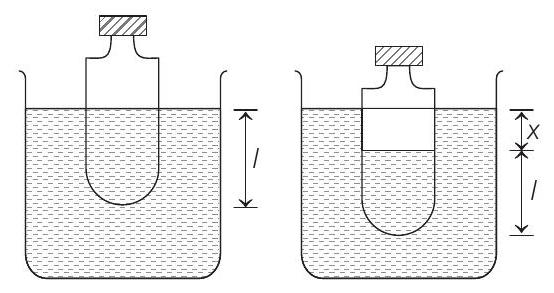Simple Harmonic Motion 5 Question 4
4. A cylindrical plastic bottle of negligible mass is filled with 310
(a)
(b)
(c)
(d)
(2019 Main, 10 Jan II)
Show Answer
Answer:
Correct Answer: 4.
Solution:
- In equilibrium condition bottle floats in water and its length ’

So,
When bottle is slightly pushed inside by an amount
So, restoring force is;
where
But
where,
From (i) and (ii) we have,
As for SHM,
We have
5 We know that in case of torsonal oscillation frequency
where,
(As, MOI of a bar is
or
When two masses are attached at ends of rod. Then its moment of inertia is
So, new frequency of oscillations is,
As,
So,
After solving it, we get,






